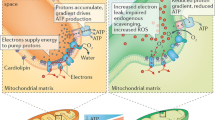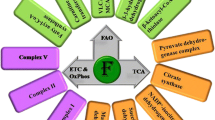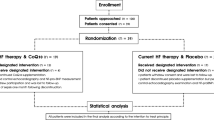Summary
The pathophysiological basis for the use of metabolic therapy in the treatment of heart failure is analyzed. Bioenergetical processes related to ATP bioavailability play a central role in regulating myocardial contractility at rest and on effort. Furthermore, a significant correlation has been demonstrated in diseased heart between ATP content, revealed at endomyocardial biopsy, and systolic and diastolic left ventricular indexes evaluated with invasive and noninvasive methods. Several international investigations demonstrate the beneficial effects of ubiquinone (coenzyme Q10) in the treatment of heart failure. Here the results of a study are reported that was conducted on patients with heart failure treated with ubiquinone. After 7 months of oral drug administration (100 mg/day), a significant improvement was observed in echocardiographic indexes of systolic function, cardiothoracic ratio, and clinical signs and symptoms of congestive heart failure. In conclusion, the introduction of metabolic drugs, such as ubiquinone, in the treatment of heart failure opens new horizons in the therapeutic approach to an ailment that entails substantial human and social costs.
Similar content being viewed by others
References
Abete P, Ambrosio G, Santoro G, Lamberti F, Caccese P, Ferrara N, Rengo F, Chiariello M (1990) Giornale di Gerontologia 38:640–641
Ambrosio G, Abete P, Santoro G, Lamberti F, Caccese P, Ferrara N, Rengo F, Chiariello M (1990) Age-related decrease in cardiac tolerance to oxidative stress in isolated rat hearts. Circulation 82: III-700
Ambrosio G, Flaherty JT, Duilio C, Tritto I, Santoro G, Elia P, Condorelli M, Chiariello M (1991) Oxygen radical generated at reflow induced peroxidation of membrane lipids in reperfused hearts. J Clin Invest 87:2056–2070
Anversa P, Olivetti G, Melissari M, Loud AV (1980) Stereological measurement of cellular and subcellular hypertrophy and hyperplasia in the papillary muscle of adult rat. J Mol Cell Cardiol 12:781–795
Bashore TM, Magorien DJ, Letterio J, Shaffer P, Unverferth DV (1987) Histologic and biomedical correlates of left ventricular chamber dynamics in man. J Am Coll Cardiol 9:734–742
Beyer RE, Bumett BA, Cartwright KJ, Edington DW, Falzon MJ, Kreitman KR, Kuhn TW, Ramp BJ, Rhee SYS, Rosenwasser MJ, Stein M, Anl C-I (1985) Tissue coenzyme Q (ubiquinone) and protein concentrations over the life span of the laboratory rat. Mech Ageing Dev 32:267–81
Blain JM, Shaffer H, Siegel AL, Bing RJ (1956) Studies on myocardial metabolism. VI. Myocardial metabolism in congestive failure. Am J Med 20:820 -833
Chatterjee K, De Marco T, Rouleau JL (1988). Vasodilator therapy in chronic congestive heart failure. Am J Cardiol 62:46A–54A
Csallany AS (1984). Effect of selenite, vitamin E and N,N′diphenyl-p-phenylenediamine on liver organic solvent soluble lipofuscin pigments in mice. J Nutrition 114:1582–1596
Dawson DA, Adams PF (1987). Current estimates from national health interview survey, USA 1988. In: Vital and health statistics. DHHS Publ. N(PHS) Washington, U.S. Government Printing Office, pp 87–1592
Folkers K (1984) Perspectives from research on vitamins and hormones. J Chem Educ 61:747–56
Folkers K, Vadhanavikit S, Mortensen SA (1985) Biochemical rationale and myocardial tissue data on the effective therapy of cardiomyopathy with coenzyme Q10. Proc Natl Acad Sci USA 82:4513–4516
Furchgott RF, Lee KS (1961) High energy phosphates and theforce of contraction of cardiac muscle. Circulation 24:416–432
Gibson TC, White KL, Klainer LM (1966) The prevalence of congestive heart failure in two communities. J Chronic Dis 19:141–156
Harman D (1984) Free radical theory of aging: the “free radical” diseases. Age 7–124
Katz AM (1984). Lipofuscin accumulation resulting from senescence and vitamin E deficiency: spectral properties and tissue distribution. Mech Ageing Dev 25:149
Katz AM (1989) The myocardium in congestive heart failure. Am J Cardiol 63:12A–16A
Klainer LM, Gibson TC, White KL (1965) The epidemiology of cardiac failure. J Clin Dis 18:797–807
Kitamura N, Yamaguchi A, Otaki M, Sawatani O, Minoji T, Tamuta H, Atobe M (1984) Myocardial tissue level of coenzyme Q10 in patients with cardiac failure. In: Folkers K, Yamamura Y (eds) Biomedical and clinical aspects of CoQ10, vol 4. Elsevier, Amsterdam pp 243–256
Langsjoen PH, Vadhanavikit S, Folkers K (1985) Effective-treatment with coenzyme Q10 of patients with chronic myocardial disease. Drug Exp Clin Res XI: 577–579
Langsjoen P, Folkers K, Lyson K, Muratsu K, Lyson T (1986) Effective and safe therapy with coenzyme Q10 for cardiomyopathy. Klin Wochenschr 66:583–590
Langsjoen H, Langsjoen P, Folkers K (1990) Long-term efficacy and safety of coenzyme Q10 therapy for idiopatic dilated cardiomyopathy. Am J Cardiol 65:521–523
Littarru GP, Ho L, Folkers K (1972) Deficiency of coenzyme Q10 in human heart disease I. Int J Vitam Nutr Res 42:291–305
Littarru GP, Ho L, Folkers K (1972) Deficiency of coenzyme Q10 in human heart disease II. Int J Vitam Nutr Res 42:413–434
Mason DT, Zelis R, Wilkman-Coppel T (1973) Symposium on congestive heart failure: recent advances in structure biochemistry, physiology and pharmacology. Am J Cardiol 32:395–410
McKee PA, Castel WP, McNamara PM, Kannel WB (1971) The natural history of congestive heart failure: the Framingham study. New Engl J Med 285:1441–1457
Mortensen SA, Vadnavikit S, Baandrup U, et al. (1985) Long term coenzyme Q10 therapy: a major advance in the management of resistent myocardial failure. Drug Exp Clin Res XI: 581–593
Opie LH (1975) Metabolism of free fatty acids, glucose and catecholamines in acute myocardial infarction. Am J Cardiol 36:938–945
Page E, McCalister LP (1973) Quantitative electron microscopic description of heart muscle cells. Application to normal, hypertrophied and thyroxin-stimulated hearts. Am J Cardiol 31:172–182
Pool PE, Spann JF jr, Buccino RA, Sonnenblick EH, Braunwald E (1967) Myocardial high energy phosphates stores in cardiac hypertrophy and heart failure. Circ Res 21:365–373
Rabinovitz M (1973). Protein synthesis and turnover in normal and hypertrophied heart. Am J Cardiol 31:202–210
Rengo F, Ambrosio G, Abete P, Napoli C, Caccese P, Santoro G, Ferrara N, Chiariello M (1992) Age-related arrhythmogenic effects of oxidative stress in isolated rat heart. The New Frontiers of Arrhythmias 1:941–944
Roberts IT, Wearn JT (1941) Quantitative changes in the capillary muscle relation ship in human hearts during normal growth and hypertrophy. Am Heart J 21:617–633
Shipley RA, Shipley LJ, Wearn JT (1937). The capillary supply in normal and hypertrophied hearts of rabbits. J Exp Med 65:29–41
Author information
Authors and Affiliations
Rights and permissions
About this article
Cite this article
Rengo, F., Abete, P., Landino, P. et al. Role of metabolic therapy in cardiovascular disease. Clin Investig 71 (Suppl 8), S124–S128 (1993). https://doi.org/10.1007/BF00226852
Issue Date:
DOI: https://doi.org/10.1007/BF00226852




